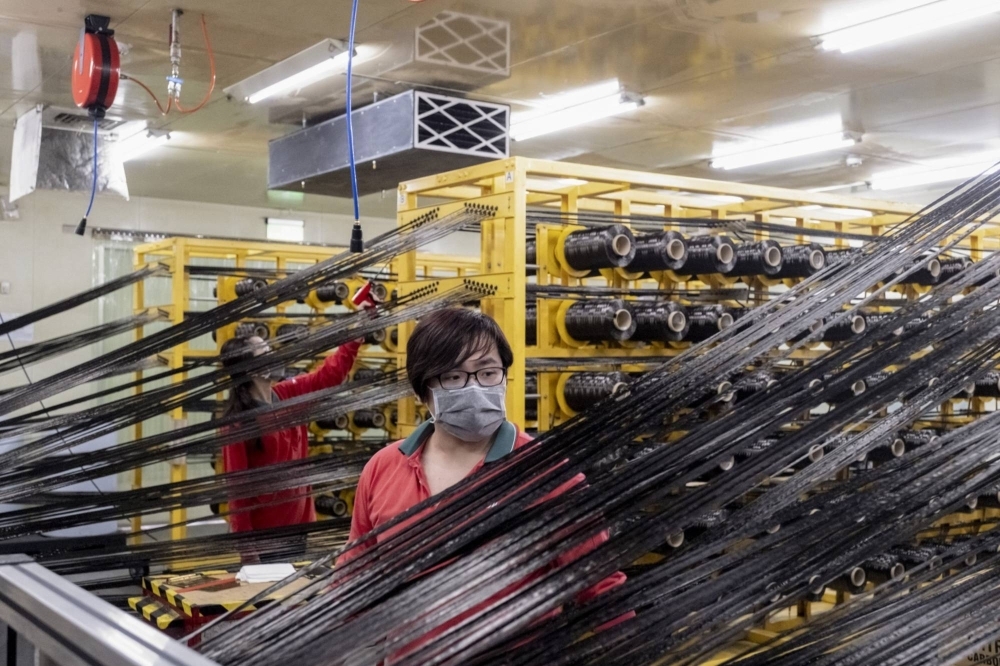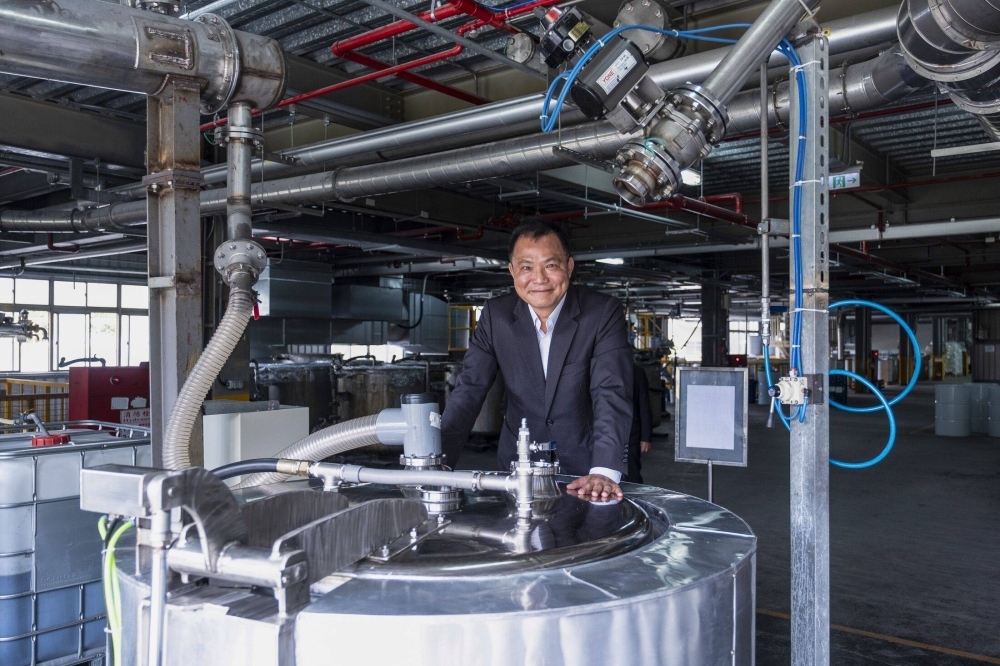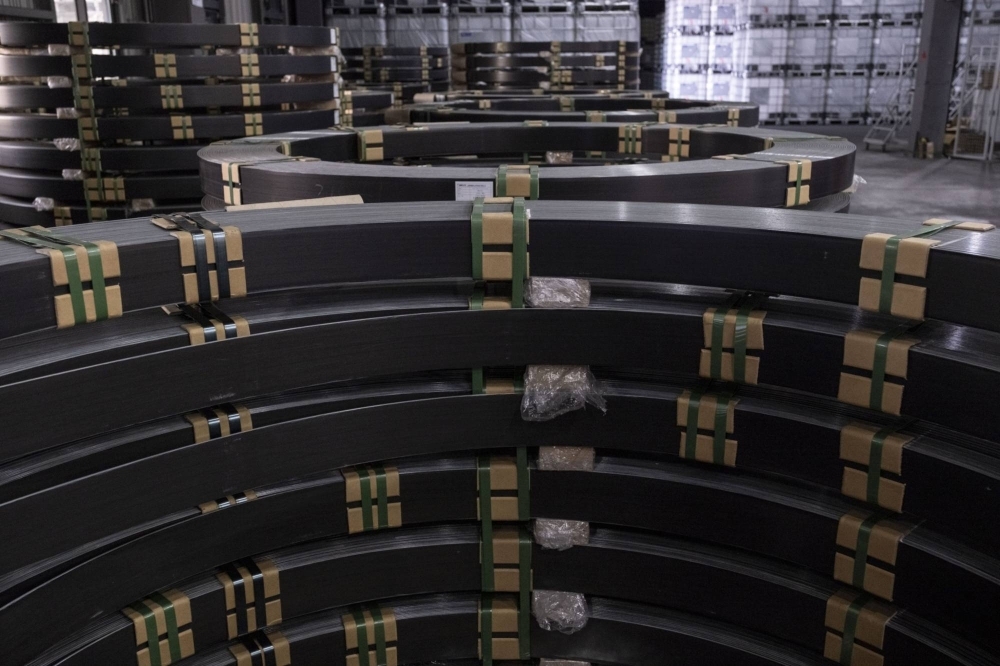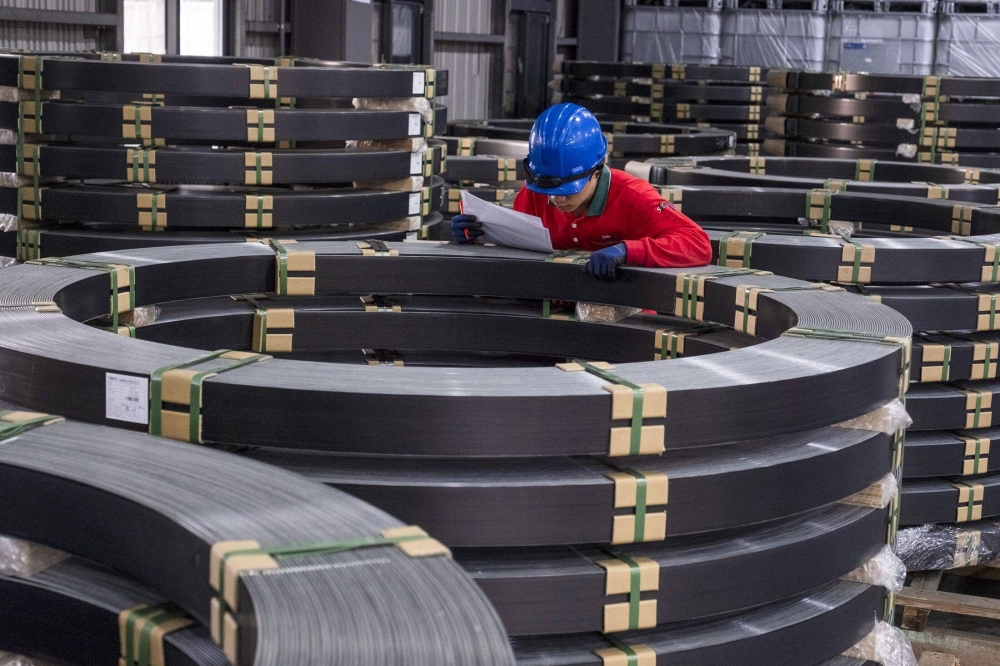Growing up in a poor village in the mountains of central Taiwan, Robert Tsai would have to walk more than two hours to bring buckets of clean drinking water back to their family home.
“That taught me the value of natural resources,” Tsai said. “Every drop has a cost.”
He’s now trying to transfer that lesson to the wind power industry to solve a nagging problem as renewable energy proliferates: mighty wind turbine blades are nearly impossible to recycle. Tsai’s company, Swancor Holding, is one of several firms globally trying to develop new products that mimic the physical properties of current blade material but can be chemically recycled, allowing their energy-intensive components to be reused in other products. There are challenges, though, to ensuring that the products take hold.
Each year, the world installs more turbines, and the size of blades keeps growing to harvest wind more efficiently. With a useful lifespan of roughly 20 years, composite waste from retired blades is expected to grow twentyfold over the next two decades, peaking at about 782,000 metric tons in 2044, according to BloombergNEF.
The wind power industry produces less composite waste compared to other industries such as construction and electronics, and about 90% of turbines — which includes the tower and other components — can be recycled since many parts are made of steel. Many companies, though, are looking into ways to reduce blade waste in a cost-effective way to meet their sustainability goals.

Virgin carbon fiber threads at Swancor’s composite production facility.
| Bloomberg
Swancor’s Taiwan factory, where the company supplies composite materials for blade manufacturing and other industries, gives a glimpse at what this future may look like. Two-meter tall yellow racks hold nearly 200 of spools of carbon fiber threads, each 2.5 kilometers long. A machine slowly pulls them together and dips them into a thick, pale yellow resin goo. The material is processed with heat to solidify and treated with pressure evenly until it forms a thin black plank.
Known as carbon-fiber composite, that material has been key to the wind industry’s growth. Strong, light and flexible, it allows manufacturers to make blades longer than football fields, allowing turbines to produce more electricity for less money. In many parts of the world, electricity produced by wind power is now cheaper than burning fossil fuels.
The problem, at least when it comes to recycling, is the pale yellow goo. Known as a thermoset resin, it isn’t easily converted back to a liquid shape once it hardens — think about trying to unfry an egg. When blades have reached the end of their life, that hardened resin makes it difficult to extract and reuse the carbon fibers, which are both valuable and emissions-intensive to produce. While a small amount of blades are repurposed into things like bridges and park benches, most are chopped up and end up in landfills or industrial furnaces.
To be clear, even without recycling blades, wind power is still much better for the environment than burning fossil fuels. But the industry is still seeking solutions to create a circular economy for turbines and end the public relations nightmare that unfurls whenever photos of old blades rotting in a ditch go viral.
“People criticized wind as ‘trash energy’ because of the unrecyclable blades,” Tsai said. “I wasn’t convinced and invested in our (research and development) efforts, and after several years, we were able to make it. We changed the material.”

The recycled carbon fibers taken out from the spinner separating the fibers from mixed liquid
| Bloomberg
Swancor’s innovation is a new resin it calls EzCiclo. Tsai says it has the same physical properties as resins being used today, but it can be dissolved in a heated vat of a specialized liquid the company calls CleaVER, allowing the fibers to be reused.
Swancor has a demonstration recycling process set up at its Taiwan plant. (The company has branches in China and Malaysia as well.) Scraps from the manufacturing floor are fed into a large metal cauldron holding the liquid. As the composite is infiltrated by the solvent, the epoxy resin breaks away from the expanded carbon fibers, with the resulting stew looking like a black seaweed soup.
The mixture is later sent to a spinner to separate fibers from liquid which can be used as raw material to produce polyester after purifying. The fibers are then dried, leaving bags full of black clumps of carbon fibers, soft enough to be teddy bear stuffing, strewn across the factory floor.
They’re too short and of reduced strength to be reused in new wind turbine blades but can be repurposed to make a wide variety of products, ranging from car bumpers to camping tables. Aerospace scrap is the most prominent source for reusable carbon fiber. The global recycled carbon fiber market is expected to be worth $278 million by 2028. It’s a relatively small figure compared to the $217 billion invested in wind energy last year, according to BNEF. But the solution could save thousands of tons of waste from the industry.
The carbon fiber composite recycling process emits about 2 kilograms of carbon dioxide for every kilogram of reclaimed carbon fiber, compared to more than 55 kilograms of emissions to produce virgin material, Swancor said. The company is still working on a life-cycle assessment with its client Goldwind examining the impact of wind turbines made with its recyclable resin over their full lifespan.

Robert Tsai
| Bloomberg
Swancor isn’t alone in trying to develop recyclable material for wind blades. A unit of Mumbai-based conglomerate Aditya Birla Group produces a recyclable resin that was used in an offshore wind farm in Germany commissioned in 2022.
Swancor’s material is still in the testing phase. Siemens Gamesa, Vestas Wind Systems A/S and Ming Yang Smart Energy Group are all trying out the material, Tsai said. Siemens Gamesa, for example, has cast 20 blades with the new resin, according to a spokesperson. The company has committed to producing 100% recyclable turbines by 2040.
EzCiclo costs about 10% to 15% more than traditional resin, but that increases total project costs by just a fraction, Tsai said. Swancor is banking on developers making that tradeoff to meet their sustainability goals.
The company will have to show that recyclable blades operate at the same level as their nonrecyclable counterparts, in addition to ensuring any buyers have access to recycling centers given the nearly nonexistent supply chain.
Whether wind developers turn to recyclable blades on a commercial scale is an open question, though, particularly given their newness.

Carbon-fiber composite made for wind blades stored at the Swancor factory in Nantou, Taiwan, in February.
| Bloomberg
“As a developer, you can’t afford to have blades failing at a rate beyond which you would normally model within your predictive maintenance schedules, so there may be reluctance to adopt this equipment until there are a good few sites operational and clear evidence of their long-term durability,” said Paul Jensen, a lecturer in business, environment and development at the University of Leeds.
He also said outstanding questions remain about the quality of the recycled materials and who will provide the recycling services, meaning there are “lots of if, buts and maybes” about whether the new blades will take off.
Swancor itself has identified some of these challenges, though it sees them as ones it can overcome. Jensen added that while there are these caveats, the new blades are “a move in the right direction nevertheless.”
For its part, Siemens Gamesa has found no discernible differences between standard and recyclable blades in terms of function, according to a spokesperson.
There are few government mandates or incentives to produce and use recyclable blades. Several European countries including Germany and the Netherlands have banned blades from being sent to landfills while China has a proposed set of standards for recycling onshore wind turbines in January. The guideline says it’s not advisable to landfill or incinerate retiring blades. The country has by far the most installed wind capacity, and if the rules go into effect, they could have major ramifications for the industry.
For Tsai, the benefit of recyclability is worth the investment given the need to cut emissions without inadvertently creating another environmental calamity.
“I need to be responsible for our shareholders, but I also assess whether this will be truly beneficial to society,” he said.

